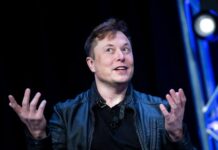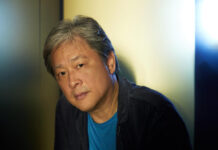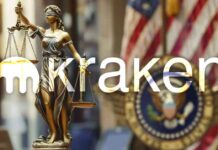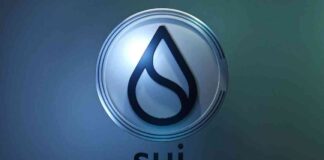The case began with the vision, Wednesday, June 1, of Jamie Dimon, the CEO of JP Morgan, the first American bank, detecting on the horizon a “hurricane” on the world economy. “This hurricane is right there, on the road, coming our way. We just don’t know if it’s a simple hurricane or superhurricane Sandy [which devastated New York in 2012]…and we better be prepared. Then came the email from Tesla boss Elon Musk, revealed by Reuters, who told his teams he had “a really bad feeling” and was planning to cut up to 10% of his workforce, in a memo titled “Global Hiring Suspension”.
With the world threatened by stagflation, action by the Federal Reserve (Fed) is likely to be much tougher than expected to stem the general rise in prices, which was still 6.3% YoY in April in the United States. In June, the US central bank will stop renewing its purchases of maturing bank securities, as it has done massively for two years to support the economy.
After raising rates by a quarter of a point in March and then by half a point in May, the Fed is likely to do so again at its meetings in mid-June, July and probably September, which would cause the short-term interest rate above 2.25%. “Right now it’s very hard to see an argument for a break. We still have a lot of work to do to bring inflation back to our 2% target, said Fed Vice Chair Lael Brainard. This is our number one challenge right now. We are starting from a position of strength. The economy is very dynamic. »
Unemployment at its lowest
The employment figures published on Friday, June 3 will have comforted the central bankers. They are excellent. Unemployment is near an all-time low of 3.6%, the country added 390,000 jobs in May and is almost back to pre-pandemic levels. It will therefore be necessary to calm the machine. Unsurprisingly, the financial markets did not like it: ten-year rates rose sharply on Friday, from 2.9% to 3%, while Wall Street fell, from 1.7% for the S
Yet despite this turmoil, the correction is hardly a “hurricane.” Admittedly, the index S
In reality, market participants do not believe the Fed when it says it will tackle inflation. They hope that the phenomenon will regulate itself by a spontaneous slowdown in the economy. The situation is worthy of Gribouille, who dives into the river to avoid getting wet from the rain: fast, a recession to avoid the wrath of the Fed, seems to be asking the markets, which welcome all the bad news auguring a cooling , such as Microsoft’s earnings downgrade. Even if it means forgetting that a decline in activity and a drop in profits will also be bad for Wall Street.
In these times of deep uncertainty, several questions. First, is America at risk of plunging into a recession? The economy has already cooled on its own, with gross domestic product (GDP) shrinking 1.5% in the first quarter from the previous quarter. This poor figure can be explained in particular by the massive increase in imports. But consumers, the mainstay of the economy, continued to spend (3.1%). To do so, they dipped into their savings, with the savings rate falling from over 8.1% in September to 4.4% in April. As long as they do, the economy should hold. “Fiscal stimulus funds are still in consumers’ pockets. They spend it,” said Jamie Dimon, judging that they still had six to nine months of reserves, for an amount of 2,000 billion dollars (1,870 billion euros).
No inflation-wage spiral
This is where the subject of inflation comes in. This reduces purchasing power. It has forced Americans to devote an increasing share of their income to energy and to reorient themselves towards cheaper products, as the disappointing results of large retailers have suggested. Has this phenomenon passed? It is possible, especially if the Organization of the Petroleum Exporting Countries increases its production to reduce the shortage created by the war in Ukraine. It should be noted that, for the United States, self-sufficient and even exporters of energy, the surge in prices is above all a phenomenon of internal transfers, which makes the shock less severe than in Europe. On the other hand, China’s restart after the Covid-19 lockdown could pull the global economy but increase pressure on commodities.
On the domestic inflation side, there is still no inflation-wage spiral (when the rise in prices feeds that of wages in an upward spiral), which is cutting into the purchasing power of Americans, but gives hope for an easier exit. of the current price crisis. “Growth in average hourly wages remains moderate compared to last year, declining from a pace of around 6% to a pace of around 4.5%. It’s the most important number in this May inflation release, and it’s mostly reassuring,” said Harvard economics professor Jason Furman.
The second unknown concerns the evolution of real estate. Housing prices have risen by more than 20% in one year. But the rate of thirty-year mortgage loans has exceeded 5% for six weeks – against 3% in June 2021 – unheard of for a decade. Normally, the cost of silver should cause the market to turn around, around 10% in overheated areas, where Americans flocked to after the pandemic, according to Moody’s forecasts.
While acknowledging that inflation was “his number one economic priority”, United States President Joe Biden brushed aside Elon Musk’s remarks: “While Elon Musk talks about this , Ford is massively increasing its investment, with 6,000 new jobs, unionized jobs, in the Midwest. Stellantis is also making similar investments in electric vehicles. Intel adds 20,000 new computer chip manufacturing jobs. So, you know, good luck with his trip to the moon. »














